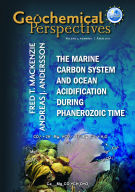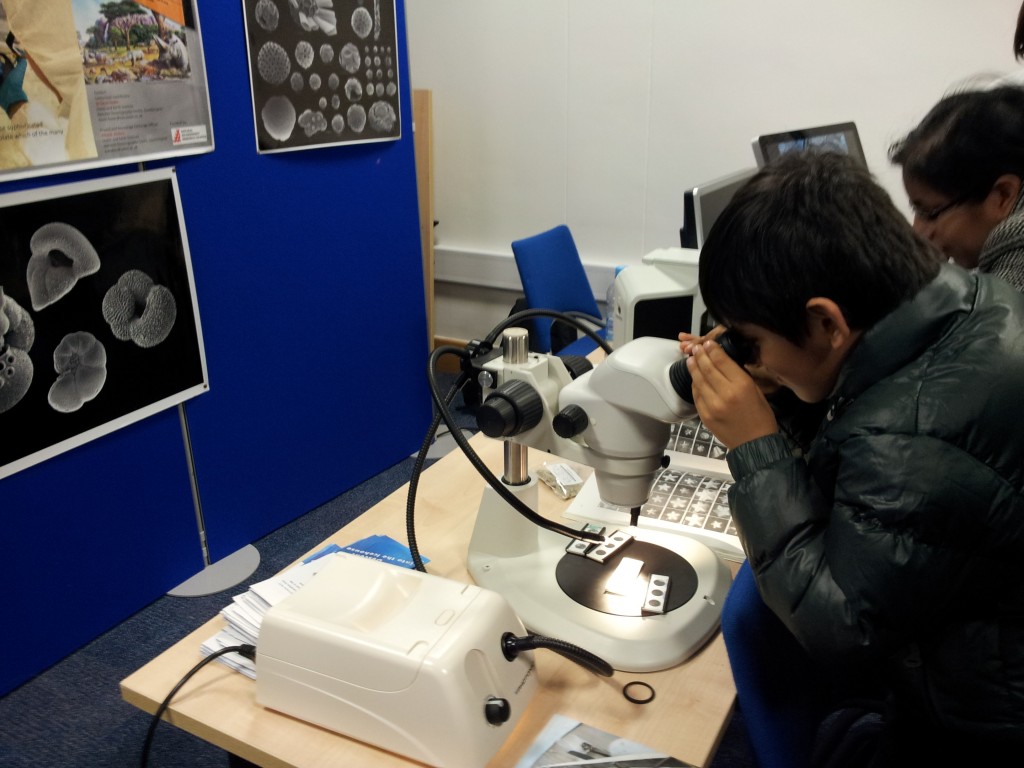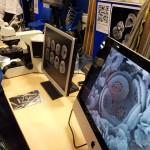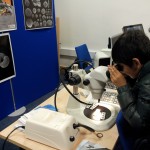The Marine Carbon System and Ocean Acidification during Phanerozoic Time
Abstract
The global CO2-carbonic acid-carbonate system of seawater, although certainly a well-researched topic of interest in the past, has risen to the fore in recent years because of the environmental issue of ocean acidification (often simply termed OA). Despite much previous research, there remain pressing questions about how this most important chemical system of seawater operated at the various time scales of the deep time of the Phanerozoic Eon (the past 545 Ma of Earth’s history), interglacial-glacial time, and the Anthropocene (the time of strong human influence on the behaviour of the system) into the future of the planet. One difficulty in any analysis is that the behaviour of the marine carbon system is not only controlled by internal processes in the ocean, but it is intimately linked to the domains of the atmosphere, continental landscape, and marine carbonate sediments.
 For the deep-time behaviour of the system, there exists a strong coupling between the states of various material reservoirs resulting in an homeostatic and self-regulating system. As a working hypothesis, the coupling produces two dominant chemostatic modes: (Mode I), a state of elevated atmospheric CO2, warm climate, and depressed seawater Mg∕Ca and SO4∕Ca mol ratios, pH (extended geologic periods of ocean acidification), and carbonate saturation states, and elevated Sr concentrations, with calcite and dolomite as dominant minerals found in marine carbonate sediments (Hothouses, the calcite-dolomite seas), and (Mode II), a state of depressed atmospheric CO2, cool climate, and elevated seawater Mg∕Ca and SO4/Ca ratios, pH, and carbonate saturation states, and low Sr concentrations, with aragonite and high magnesian calcites as dominant minerals found in marine carbonate sediments (Icehouses, the aragonite seas).
For the deep-time behaviour of the system, there exists a strong coupling between the states of various material reservoirs resulting in an homeostatic and self-regulating system. As a working hypothesis, the coupling produces two dominant chemostatic modes: (Mode I), a state of elevated atmospheric CO2, warm climate, and depressed seawater Mg∕Ca and SO4∕Ca mol ratios, pH (extended geologic periods of ocean acidification), and carbonate saturation states, and elevated Sr concentrations, with calcite and dolomite as dominant minerals found in marine carbonate sediments (Hothouses, the calcite-dolomite seas), and (Mode II), a state of depressed atmospheric CO2, cool climate, and elevated seawater Mg∕Ca and SO4/Ca ratios, pH, and carbonate saturation states, and low Sr concentrations, with aragonite and high magnesian calcites as dominant minerals found in marine carbonate sediments (Icehouses, the aragonite seas).
Investigation of the impacts of deglaciation and anthropogenic inputs on the CO2–H2O–CaCO3 system in global coastal ocean waters from the Last Glacial Maximum (LGM: the last great continental glaciation of the Pleistocene Epoch, 18,000 year BP) to the year 2100 shows that with rising sea level, atmospheric CO2, and temperature, the carbonate system of coastal ocean water changed and will continue to change significantly. We find that 6,000 Gt of C were emitted as CO2 to the atmosphere from the growing coastal ocean from the Last Glacial Maximum to late preindustrial time because of net heterotrophy (state of gross respiration exceeding gross photosynthesis) and net calcification processes. Shallow-water carbonate accumulation alone from the Last Glacial Maximum to late preindustrial time could account for ~24 ppmv of the ~100 ppmv rise in atmospheric CO2, lending some support to the ‘‘coral reef hypothesis’’. In addition, the global coastal ocean is now, or soon will be, a sink of atmospheric CO2, rather than a source. The pHT (pH values on the total proton scale) of global coastal seawater has decreased from ~8.35 to ~8.18 and the CO32- ion concentration declined by ~19% from the Last Glacial Maximum to late preindustrial time. In comparison, the decrease in coastal water pHT from the year 1900 to 2000 was ~8.18 to ~8.08 and is projected to decrease further from about ~8.08 to ~7.85 between 2000 and 2100. During these 200 years, the CO32- ion concentration will fall by ~ 45%. This decadal rate of decline of the CO32- ion concentration in the Anthropocene is 214 times the average rate of decline for the entire Holocene!
In terms of the modern problem of ocean acidification and its effects, the “other CO2 problem”, we emphasise that most experimental work on a variety of calcifying organisms has shown that under increased atmospheric CO2 levels (which attempt to mimic those of the future), and hence decreased seawater CO32- ion concentration and carbonate saturation state, most calcifying organisms will not calcify as rapidly as they do under present-day CO2 levels. In addition, we conclude that dissolution of the highly reactive carbonate phases, particularly the biogenic and cementing magnesian calcite phases, on reefs will not be sufficient to alter significantly future changes in seawater pH and lead to a buffering of the CO2-carbonic acid system in waters bathing reefs and other carbonate ecosystems on timescales of decades to centuries. Because of decreased calcification rates and increased dissolution rates in a future higher CO2, warmer world with seas of lower pH and carbonate saturation state, the rate of accretion of carbonate structures is likely to slow and dissolution may even exceed calcification. The potential of increasing nutrient and organic carbon inputs from land, occurrences of mass bleaching events, and increasing intensity (and perhaps frequency of hurricanes and cyclones as a result of sea surface warming) will only complicate matters more. This composite of stresses will have severe consequences for the ecosystem services that reefs perform, including acting as a fishery, a barrier to storm surges, a source of carbonate sediment to maintain beaches, and an environment of aesthetic appeal to tourist and local populations. It seems obvious that increasing rates of dissolution and bioerosion owing to ocean acidification will result in a progressively increasing calcium carbonate (CaCO3) deficit in the CaCO3 budget for many coral reef environments. The major questions that require answers are: will this deficit occur and when and to what extent will the destructive processes exceed the constructive processes?
The Marine Carbon System and Ocean Acidification during Phanerozoic Time
Fred T. Mackenzie1 and Andreas J. Andersson2
2 Scripps Institution of Oceanography, University of California at San Diego, La Jolla, California 92093-0202, USA Full text PDF (20MB) | HTML and PDF soon on GeoScienceWorld doi: 10.7185/geochempersp.2.1 | Volume 2, Number 1 (pages 1-227)
Responses of the Emiliania huxleyi Proteome to Ocean Acidification
A new study, published in PLOS ONE thie month investigates how a strain of the coccolithophore Emiliania huxleyi might respond if all fossil fuels are burned by the year 2100 – predicted to drive up atmospheric CO2 levels to over four times the present day. Specimens grown under this high CO2 scenario were compared with specimens grown under present day CO2 levels.
Below, the press release published at the NOCS website.
Press Release: Marine algae show resilience to carbon dioxide emissions
A type of marine algae could become bigger as increasing carbon dioxide emissions are absorbed by the oceans, according to research led by scientists based at the National Oceanography Centre, Southampton (NOCS).
Coccolithophores are microscopic algae that form the base of marine food chains. They secrete calcite shells which eventually sink to the seafloor and form sediments, drawing down and locking away carbon in rocks. Because of their calcitic shells, some species have been shown to be sensitive to ocean acidification, which occurs when increasing amounts of atmospheric CO2 are absorbed by the ocean, increasing seawater acidity.
But these findings suggest that not all coccolithophore species respond to ocean acidification in the same way.
“Contrary to many studies, we see that this species of coccolithophore gets bigger and possesses more calcite under worst-case scenario CO2 levels for the year 2100,” says Dr Bethan Jones, lead author and former researcher at University of Southampton Ocean and Earth Science, which is based at NOCS. “They do not simply dissolve away under high CO2 and elevated acidity.”
However, the researchers also observed that cells grew more slowly under the high CO2 scenario, which could be a sign of stress.
The researchers also tested for changes in protein abundance – using a technique developed by the collaborating institutes – as well as other biochemical characteristics. They detected very few differences between the two scenarios, indicating that apart from growth, this strain of coccolithophore does not seem to be particularly affected by ocean acidification.
Co-author Professor Iglesias-Rodriguez, formerly at University of Southampton Ocean and Earth Science, says: “This study suggests that this strain of Emiliania huxleyi possesses some resilience to tolerate future CO2 scenarios, although the observed decline in growth rate may be an overriding factor affecting the success of this ecotype in future oceans. This is because if other species are able to grow faster under high CO2, they may ‘outgrow’ this type of coccolithophore.
“Given that chalk production by calcifiers is the largest carbon reservoir on Earth – locking away atmospheric CO2 in ocean sediments – understanding how coccolithophores respond to climate change is a first step in developing models to predict their fate under climate pressure such as ocean acidification.”
The team used a technique called ‘shotgun proteomics’, optimised for marine microbiological research at the University of Southampton’s Centre for Proteomic Research, to detect changes in proteins under the different CO2 scenarios.
The collaborative study involved researchers at University of Southampton Ocean and Earth Science (which is based at NOCS), University of Southampton Institute for Life Sciences, University of Southampton Centre for Proteomic Research, University of Cambridge, University College London and Xi’an Jiaotong-Liverpool University, China.
A fantastic Ocean and Earth Day at National Oceanography Centre, Southampton
Another very successful Ocean and Earth Open Day held at NOC, Southampton on Saturday 23 March, 2013. A great turnout on a very cold day, we had over 3000 visitors and the feedback was extremely positive.
The Descent into the Icehouse (@IntotheIcehouse) participated in the event with a poster display and information material about our research work. We had a great attendance; our stand was full most of the time and it was a rewarding and exciting experience for both us and the visitors. It was fantastic to see the excitement in the children’s faces discovering through a microscope the tiny world of microfossils and especially those of foraminifera, a group of single-celled animals that construct shells of almost infinite variety and in most geographical regions.
The study of fossil foraminifera has many applications beyond expanding our knowledge of the evolution and diversity of life. Fossil foraminifera are useful in paleoecology, paleobiogeography, as well as, oil exploration.
The children and their parents had a great time exploring and discovering the wonders of nature and a whole world under the microscope.
- Eleni explaining the microscopic world
Our OED day would not happen without the help of our scientists and volunteers
Rosie Sheward Eleni Anagnostou Ioannis Komis Samantha Gibbs… and without their enthusiasm, dedication, determination and sheer hard work, this day could not be such a success. I’d like to take this opportunity to say again a very big THANK YOU.
More photos and a video will be made available from NOC online soon, so look out for another post in the next few weeks.
Links
Follow us on Twitter
Recent Posts
- In the News : What a three-million year fossil record tells us about climate sensitivity
- Past evidence confirms recent IPCC estimates of climate sensitivity
- Crucial new information about how the ice ages came about : PR & Podcast
- 2014 Sino-UK Coevolution of Life and the Planet Summer School
- Past and Future CO2 – Reconstructing atmospheric Carbon Dioxide









